The Brightest Stars in The Night Sky
In the night sky, without light pollution, you can see 6000 stars with the naked eye. And if you were away from city lights, you would notice that the stars differ from each other not only brightness, but also with color.
The stars are huge balls of gas, composed mainly of hydrogen and helium, these elements are held by gravity. Each star has its own life cycle, which it is bound since birth, and it depends on the number of particles from which it was formed.
Stars with mass 8% of the Sun can ignite a nuclear fusion reaction in the core, synthesizing helium from hydrogen, and their energy gradually moves from the inside out and pours into the Universe.
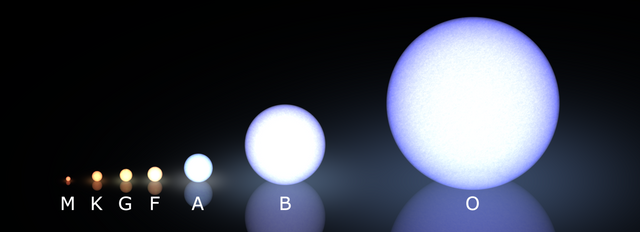
Low-mass stars are red (due to low temperatures), they are dim, and burn their fuel slowly (it will take trillions of years). Large and heavy stars are blue and burn very fast, by the standards of the Universe.
The bigger the star is gaining mass, the hotter its core and the greater region in which there is nuclear fusion. By the time of reaching a sun mass, star falls into the class G, and its lifetime does not exceed ten billion years. Double the solar mass and you will get the star of the class A, it's bright- blue and lives only 2 billion years. And the most massive stars of classes O and B live only a few million years, after what the hydrogen fuel ends. Not surprisingly, the most massive and hot stars are also the brightest.
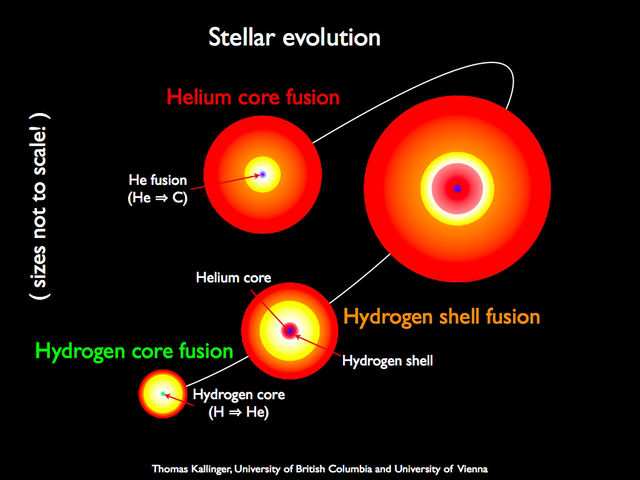
After hydrogen, the star starts to burn heavier elements (helium), expanding into a giant star, colder, but brighter than the original. Phase of giant with helium is shorter than the phase of the combustion of hydrogen, but its incredible brightness makes it visible from much larger distances.
Let's look at the brightest stars in our sky (start with the 10th of brightness and will gradually get to the 1st). To understand how powerful is their light, remember that 1 light year is the distance equal 9460000 million kilometers.
Betelgeuse
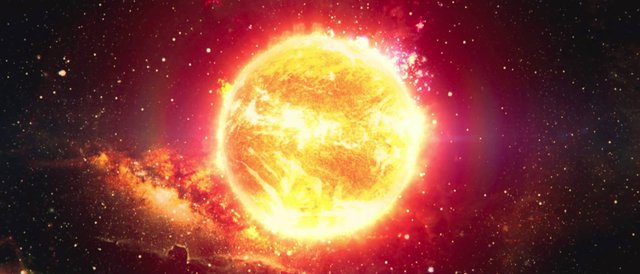
Red super giant in the constellation of Orion. Betelgeuse was a bright and hot star of class O, before burned all hydrogen, now it burns helium. Despite the low temperature of 3500 K, it is more than 100,000 times brighter than our Sun, so we can see it from a distance of 600 light years. In the next million years Betelgeuse will become a supernova, and temporarily will become the brightest star in the sky, perhaps, visible and day. It is also one of the largest stars known to astronomers: diameter 1,000 times larger than the diameter of our sun, and it weighs 17 times more.

Achernar
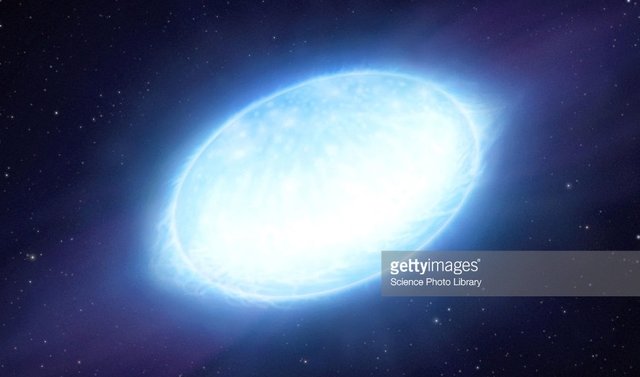
Double star blue color, weighing seven times more than the Sun, brightness in 3000 times higher. This is one of the most rapidly rotating stars known to us, because of its high speed it has an oval shape. But it is quite far from us, in 139 light years. Due to the high temperature at the poles (20000 K), formed the strong polar winds, which carry particles of the stars into space. The star of the class B. Its name in Arabic means "the end of the river".
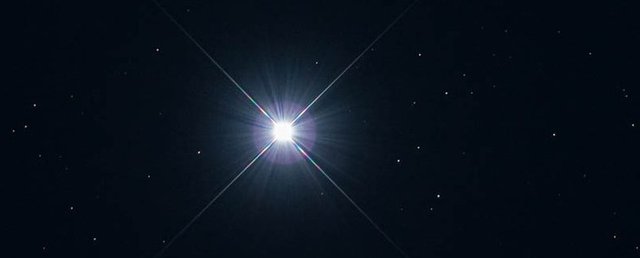
Procyon
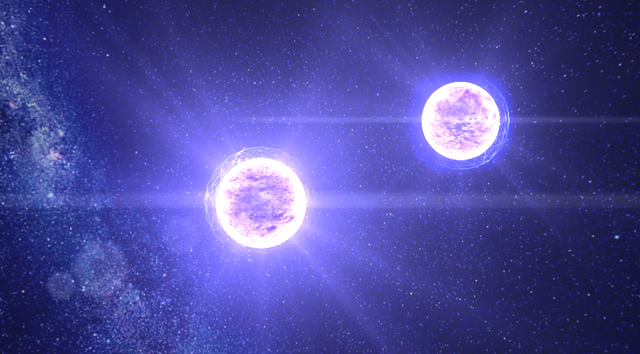
The star is very different from the rest. Procyon is a modest star of the F-class, is just 40% larger than the Sun, and is on the verge of exhaustion of hydrogen in the core (another words- is sub giant in the process of evolution). It's about 7 times brighter than the Sun, just in 11.5 light years from us. It is a double star, one of which has a yellowish-white color. Procyon is under expansion and is expected to increase 100-150 times (will be red or orange). The second star is a white dwarf, which is very difficult to see due to the influence of the first star. That's why the final color of its glow closer to purple.

Rigel
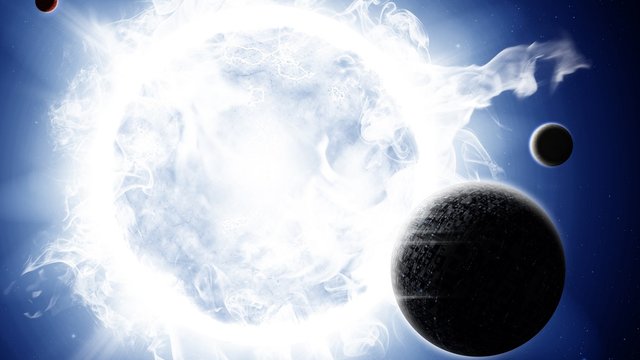
Is in the same constellation as Betelgeuse, but farther away from us at 860 light years, and shines brighter. This is a rare blue super giant, 120,000 times brighter than the Sun, in 17 times heavier. Any object at a distance of one astronomical unit (149 597 870 kilometers), will be evaporated and dissipated by strong stellar wind from Rigel. This is one of the most powerful and destructive of the stars in our galaxy. It is in 74 times larger than the Sun.

Capella
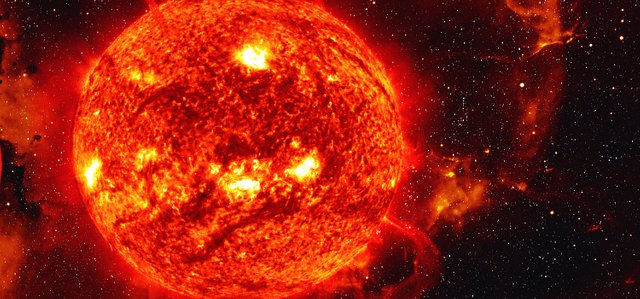
It is a strange star, because it is two red giant (class G), temperature comparable to the sun, but each of them about 78 times brighter than the Sun and 2.5 times more, located at a distance of 42 light years. One of the stars is at the stage of the red giant, in the bowels of the star has already begun the process of helium burning. While the second star in the transition state, the hydrogen is already burned, but helium has not yet begun.
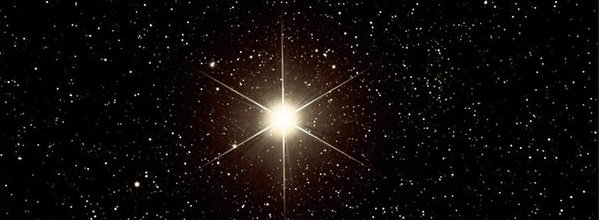
Vega

The house of the aliens from the movie "Contact". It is only 25 light years from us and one of the brightest known stars of class A (white color). This is a very young star, she's only 400-500 million years, but it is 40 times brighter than the Sun, two times bigger and two times heavier. It has a very high rotation speed of 274 km/s (our sun rotates at a speed about 2 km/s). Vega has already lived half of its life.

Arcturus
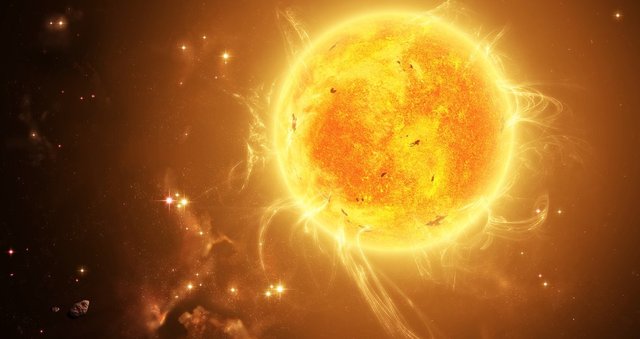
Orange Giant, on the evolutionary scale is somewhere between Procyon and Capella, in the red giant phase. It is the brightest star in the Northern hemisphere, 110 times brighter than the Sun, and following the evolutionary path, could be brighter. It’s at a distance of 37 light years, larger than the sun 24 times. Arcturus is a changeable star i.e., it pulsates and its brightness is constantly changing. The name of the star derives from ancient Greek. "Guardian of the bear", because Arcturus is near the constellation Ursa Major.

Alpha Centauri
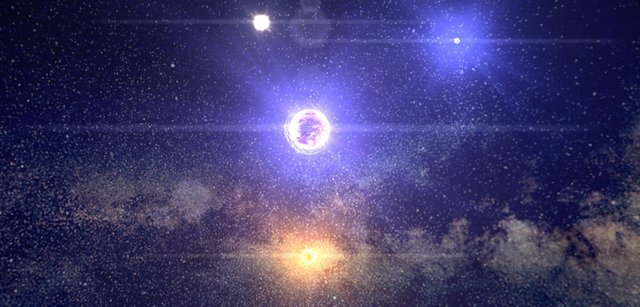
Is dimmer than any star in this list, but the Alpha Centauri system is the closest stars to us, therefore its location affects its apparent brightness, it is at a distance of only 4.4 light-years. It is much brighter than the Sun, because It is a Double star, near which is also a red dwarf. In size and brightness, these stars similar to the Sun. It is assumed that Alpha Centauri will be the first goal of interstellar flight.
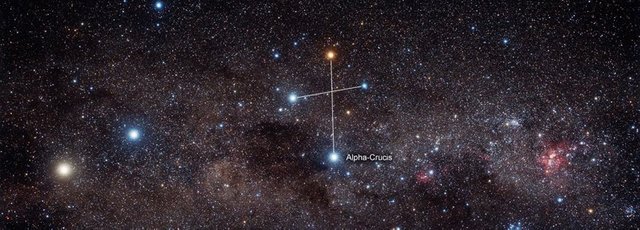
Canopus
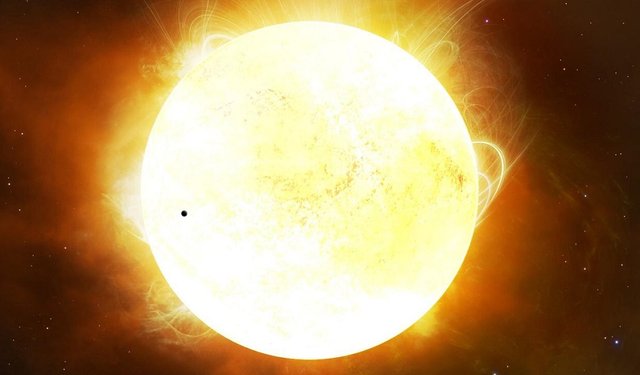
Super giant with yellowish-white light, at 15,000 times brighter than the sun, and this is the second of the brightest stars in the night sky, despite the distance of 310 light years from us. In 10 times more massive than the Sun, and with a diameter 65 times more, but weighs only in 8 times more. Canopus has the highest luminosity among all stars in a radius of 700 light years from the Sun.

Sirius

It is two times brighter than Canopus, often flickers, because its bright light can penetrate the lower layers of the atmosphere better than light of other stars. Sirius is only 8.6 light years from us. It is the star of the class A, twice as massive and 25 times brighter than the Sun. Sirius is very young, about 250 million years (the age of the sun 4.5 billion) and like some of the other stars in this list is a double star.>
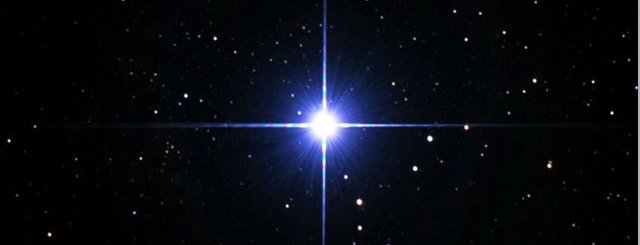
Sirius is brighter than the nearest star to the Sun- Alpha Centauri, or even super giants such as Canopus, Rigel, Betelgeuse. By distance from Earth, Sirius is in the seventh place, but he is the brightest of this top ten. Not having a great brightness, Sirius is bright due to the fact that he is close to us.
***
It may seem strange that the firsts in the list are not the brightest and not the closest stars (rather a combination of sufficient brightness and sufficiently small distances allow them to lead). The stars which located twice as far, have the brightness is four times less, therefore, Sirius shines brighter than Canopus, which shines brighter than alpha Centauri, etc.
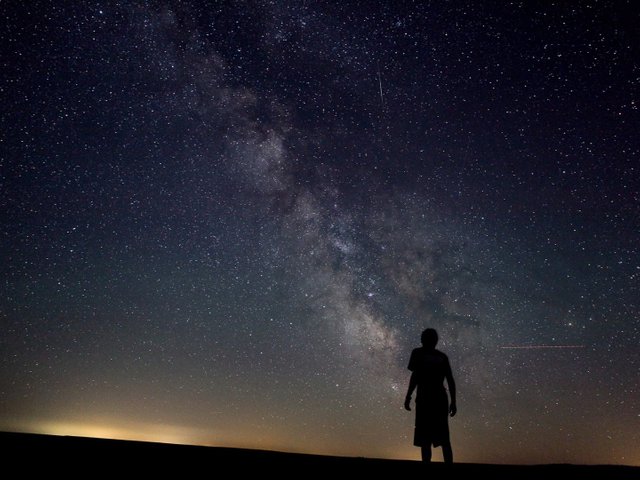
All these stars will disappear from the firmament after millions and billions of years, by the standards of man that's an eternity. But under the weight of daily worries and the domes of artificial light, many of us have already lost them forever...

https://steemit.chat/channel/steemSTEM
Very nice post, with a lot of beautiful illustrations! Stars and galaxies are fascinating and we thank you for sharing the associated knowledge in such a way easy to catch for anyone interested.
As a bonus, and in addition to resteeming for exposure. We are awarding you a small 5 Steem Power deposit as a thank you for creating quality STEM related postings on Steemit. We hope you will continue to educate us all!
Thank you!
Some precious images!!!